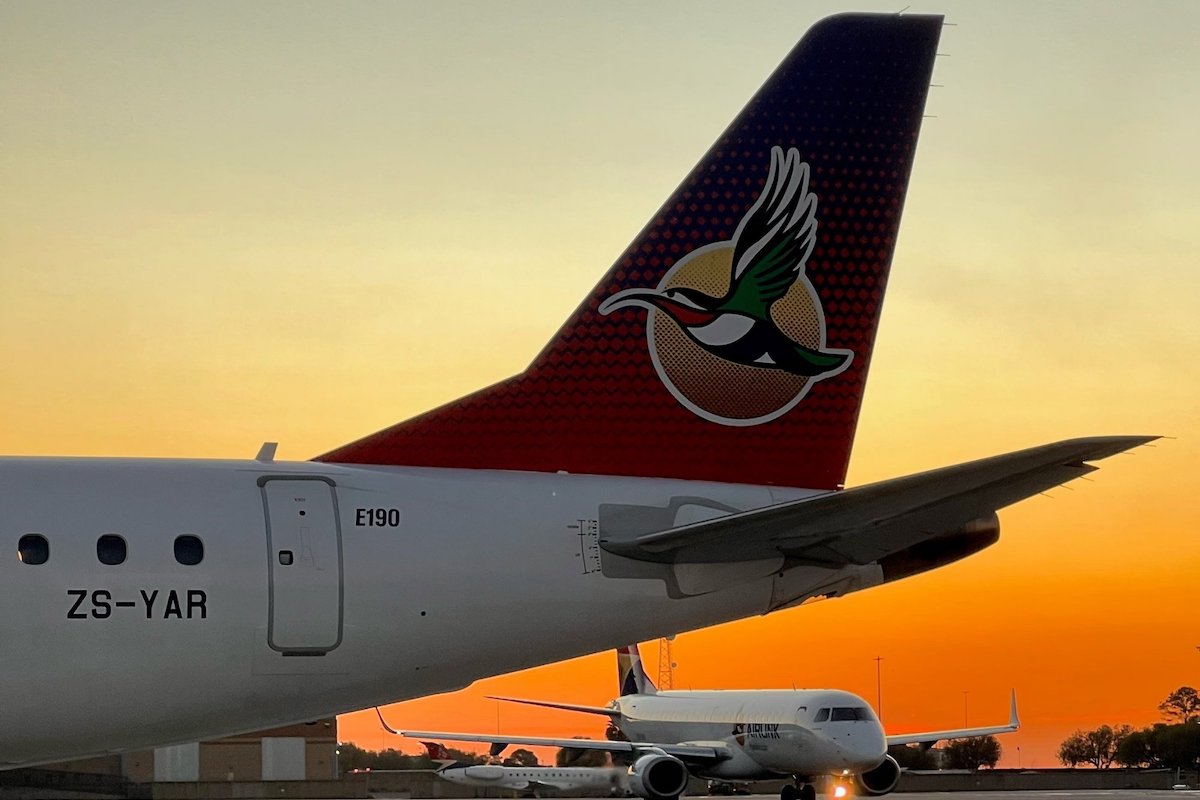South Africa's Airlink Buys Stake in FlyNamibia to Strengthen Global Service to Region

Photo Credit: Airlink
Southern Africa's airline market continues to shift as the region emerges from the pandemic. Regional Airlink has inked a deal for Namibia's only domestic airline, while long struggling South African Airways is on the defensive amid questions over its future.
Airlink will buy 40 percent of FlyNamibia, Namibia's only operating scheduled domestic airline, under a deal unveiled at the end of September that aims to expand air service both within and to the Southern Africa country. The deal will bring the two carriers closer together with all FlyNamibia flights transitioning to using Airlink's IATA code — 4Z — in an effort to boost sales and improve international connectivity, particularly with Airlink's expansive list of global partners. The value of the deal was not disclosed.
In the past two years, Airlink has signed new codeshares with global giants Emirates, Qatar Airways, and United Airlines. These deals feed passengers onto the South African airline's flights, as well as extend three global carriers' networks deeper across Southern Africa.
The expansion comes as the questions mount over the future of South Africa's flag carrier, South African Airways. On September 29, South African Airways released a statement saying it was not at risk of losing key international air route rights despite many being dormant since it suspended operations early in the pandemic. The carrier has only flown nine routes — six within its home country, and three regionally — since it resumed flights in September 2021. South African Airways will resume two more routes that it flew prior to the pandemic in November: Johannesburg to Victoria Falls, and Windhoek, according to Diio by Cirium schedules.
"SAA management assures that there is a variety of resources within the company and the global aviation industry that can be innovatively exploited for the future success of SAA. We assure our customers and all our stakeholders and partners that there are no plans, nor an intention to see South African Airways liquidated," South African Airways Executive Chairman John Lamola said earlier in September in response to questions over the airlines' long-term viability.
The questions over South African Airways' future surround the potential sale of a stake in the carrier to a private equity firm. Lamola described progress on the deal as "beset with delays" citing legal requirements put in place by the South African government, but that the airline aims to conclude it by March.
The moves come just over four months after South Africa's second largest airline, Comair, closed its doors. In the second half of 2022, every remaining carrier in the country has gained share compared to the first half: market leader Safair 20 points for a dominant nearly 60 percent share, Airlink 4 points for 20 percent, and South African Airways 7 points for 15 percent, Diio schedules show. Overall, seat capacity in South Africa is down 12 percent in the second half of the year compared to the first half; and 38 percent compared to 2019.
The plight of South African Airways highlights the fact that the change in African aviation is not over. Airlink's purchase of FlyNamibia is one such change. To be clear, FlyNamibia is a niche player in Africa providing mainly domestic flights in its namesake country; state-owned Air Namibia shut down in 2021. Airlink and FlyNamibia's partnership is emblematic of the increasing cross-border airline cooperation — and consolidation — underway across the continent. This cooperation is largely seen as a way to maybe, finally realize the seemingly perennially unrealized airline potential in Africa.
In just the past month, African aviation leader Ethiopian Airlines was selected as the preferred bidder for a new Nigerian airline, Nigeria Air. And Air Arabia unveiled plans to launch a new subsidiary in Sudan named, aptly, Air Arabia Sudan. These deals, and Airlink's own for FlyNamibia, come almost a year after South African Airways and Kenya Airways unveiled their own partnership — a deal that, as yet, has yet to show much progress.
But each deal faces its own challenges. Nigeria has bedeviled many other airlines, and entrepreneurs, prior to Ethiopian. There are armed conflicts in both Ethiopia and Sudan. And, as for South African Airways and Kenya Airways, there is no guarantee that joining two troubled airlines with years of state — and political — intervention is a recipe for success.
In terms of Airlink and FlyNamibia, the deal was described by executives of both airlines as supporting Namibia's economic growth, and about more than just creating a larger airline. FlyNamibia Managing Director Andre Compion spoke of the larger carrier being better able to serve the country's expanding resource industry, and returning tourists.
"By joining hands with Airlink and becoming part of its global network, we will be even better able to serve foreign and local tourists and businesses," he said.
